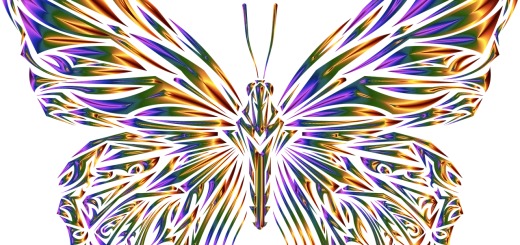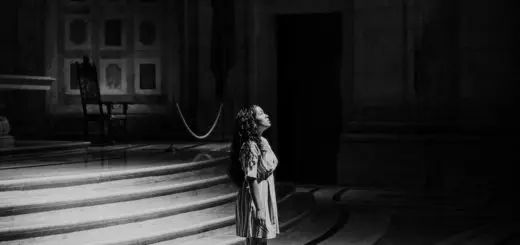The Goddess Taweret: Protector of Motherhood

Looking for more amazing products? Check out our online store and explore our collection here! Happy shopping!
Before diving in, please note: This post is for informational purposes only. If you’d like to know more about how we approach topics, feel free to check out our friendly Disclaimer Page.
Hey there, amazing readers! 
We’re committed to delivering quality posts, and your support (even just sticking around despite the ads) means everything to us. So, bear with us, and thanks for helping us keep the good vibes rolling. Now, on to the fun stuff!
TRANSLATE BUTTON AT THE END OF THE ARTICLE
Overview
The Goddess Taweret, often depicted as a pregnant hippopotamus standing upright on her hind legs, was a prominent figure in ancient Egyptian mythology.
She played a vital role as the protector of motherhood, ensuring the safety of pregnant women and children.
Taweret’s origins can be traced back to the early dynastic period of ancient Egypt, and she remained a popular deity throughout the Pharaonic era.
This article explores the various aspects of Taweret’s significance, including her role as a protective deity, her symbolism and iconography, her association with fertility and childbirth, rituals and offerings dedicated to her, her presence in Egyptian temples and households, her influence on ancient Egyptian art and sculpture, her role in funerary practices, and her rediscovery and modern reverence.
Origins of Taweret in Ancient Egyptian Mythology
Taweret’s origins can be traced back to the early dynastic period of ancient Egyptian history.
She is believed to have emerged as a deity during the Old Kingdom, around the 3rd millennium BCE.
The name "Taweret" is derived from the Egyptian words "ta" meaning "great" and "weret" meaning "she who is great." This suggests her importance and power in ancient Egyptian society.
Taweret was primarily associated with the Nile River and the fertility it brought to the land.
She was also closely linked to the protective aspects of the goddess Hathor and the ferocious nature of the hippopotamus.
Taweret’s Role as a Protective Deity
Taweret was primarily known as a protective deity, especially for pregnant women and children.
She was believed to ward off evil spirits and malevolent forces that could endanger the well-being of mothers and their unborn babies.
Taweret was often invoked during childbirth to ensure a safe delivery and protect the newborn child.
She was also associated with warding off other dangers, such as diseases and accidents.
Egyptians believed that Taweret possessed immense strength and power, capable of providing a shield of protection to those who sought her assistance.
Iconography and Symbolism of Taweret
Taweret was depicted as a fearsome yet nurturing figure.
She was often represented as a pregnant hippopotamus standing upright on her hind legs, with the head and arms of a lioness and the tail of a crocodile.
This composite creature symbolized her association with both land and water.
The hippopotamus represented the protective and aggressive nature, while the lioness symbolized power and ferocity, and the crocodile signified fertility and the life-giving properties of the Nile River.
Taweret’s fearsome appearance aimed to deter any potential threats to pregnant women and children.
Taweret: Guardian of Pregnant Women and Children
As the guardian of pregnant women and children, Taweret was believed to watch over them, warding off evil spirits, and ensuring their safety.
Pregnant women often wore amulets or carried small figurines of Taweret to invoke her protection.
These amulets were typically made of faience or precious metals and were believed to possess magical powers that would safeguard both the mother and the unborn child.
Taweret was also associated with protecting children from harm, whether it be physical dangers or spiritual afflictions.
She was considered a loving and caring mother figure who would nurture and guide the young.
Taweret’s Connection to Fertility and Childbirth
In Egyptian mythology, Taweret was closely linked to fertility and childbirth.
The hippopotamus, a creature associated with her, symbolized the life-giving properties of the Nile River.
The river’s floods were essential in ensuring the fertility of the land, and Taweret played a vital role in this process.
She was believed to control the river’s annual inundation, which brought rich silt and nourishment to the soil.
Taweret’s association with childbirth was also evident in her role as a protector during labor and delivery.
Explore the Path to Spirituality and Enlightenment – Start Here.
Women would often pray and make offerings to Taweret to ensure a successful birth and the health of the newborn.
Rituals and Offerings to Honor Taweret
Ancient Egyptians held rituals and made offerings to honor and appease Taweret.
These rituals varied in complexity, ranging from simple prayers and offerings to elaborate ceremonies performed by priests in temples.
Common offerings included food, incense, flowers, and figurines representing Taweret.
Women seeking her protection during pregnancy or childbirth would often present votive offerings or perform rituals at household shrines.
These acts of devotion were seen as a way to establish a connection with Taweret and seek her favor and protection.
Taweret’s Presence in Egyptian Temples and Household Shrines
Taweret was revered in Egyptian temples and had a significant presence in religious rituals.
Temples dedicated to her were constructed throughout ancient Egypt, and priests conducted daily rituals to honor her.
These rituals involved offerings, prayers, and purification ceremonies.
Taweret was also a prominent figure in household shrines, where families would create a sacred space to worship and seek her protection.
These shrines often included statues or images of Taweret, accompanied by offerings and ritual activities performed by family members.
Taweret’s Popularity and Devotion in Ancient Egypt
Taweret enjoyed widespread popularity and devotion in ancient Egypt.
Her role as a protective deity, particularly for pregnant women and children, made her a highly revered figure.
Women from all social classes sought her assistance during pregnancy and childbirth.
Taweret’s popularity extended beyond the common folk to the royal court, where she was honored by pharaohs and queens alike.
Her imagery was incorporated into royal jewelry, amulets, and household items, demonstrating her significance in ancient Egyptian society.
Taweret’s Influence on Ancient Egyptian Art and Sculpture
Taweret’s influence on ancient Egyptian art and sculpture can be observed through the numerous depictions of her in various forms.
Artists often portrayed her in statuary, reliefs, and paintings, emphasizing her fierce yet nurturing qualities.
The combination of the hippopotamus, lioness, and crocodile features in her iconography created a distinctive and recognizable image.
Taweret’s popularity also led to her inclusion in amulets and jewelry, which were worn by both commoners and members of the royal family.
These artistic representations served as a constant reminder of her protective powers and her importance in everyday life.
Taweret’s Role in the Afterlife and Funerary Practices
Taweret’s role extended beyond the realm of the living.
In Egyptian funerary practices, she played a crucial role in ensuring the well-being of the deceased in the afterlife.
Taweret was often depicted on the walls of tombs, acting as a guardian and protector of the deceased.
Her presence in tombs was believed to provide spiritual protection and aid the deceased in their journey to the afterlife.
Additionally, amulets depicting Taweret were placed in the mummy wrappings to ward off evil and ensure a safe passage to the realm of the dead.
Rediscovery and Modern Reverence for Taweret
Taweret’s significance faded with the decline of ancient Egyptian civilization.
After centuries of neglect, she was largely forgotten until the modern rediscovery of ancient Egyptian culture and mythology.
In recent years, there has been a resurgence of interest in Taweret, particularly among those interested in ancient Egyptian spirituality and goddess worship.
She is now recognized as a powerful and nurturing deity, revered for her protective qualities and association with motherhood.
Contemporary practitioners of Egyptian paganism and eclectic spiritual traditions often honor Taweret through rituals, prayers, and the creation of personal altars.
Conclusion
The Goddess Taweret played a vital role as the protector of motherhood in ancient Egyptian mythology.
Her origins can be traced back to the early dynastic period, and she remained a popular deity throughout ancient Egyptian history.
Taweret’s fearsome yet nurturing appearance represented her role as a guardian of pregnant women and children.
She was closely associated with fertility and childbirth, and her presence in temples and household shrines was significant.
Taweret’s popularity is evident in her influence on ancient Egyptian art and sculpture, as well as in funerary practices.
Despite being largely forgotten for centuries, Taweret has experienced a modern revival, with contemporary devotees recognizing and revering her protective powers and connection to motherhood.

The Enlightenment Journey is a remarkable collection of writings authored by a distinguished group of experts in the fields of spirituality, new age, and esoteric knowledge.
This anthology features a diverse assembly of well-experienced authors who bring their profound insights and credible perspectives to the forefront.
Each contributor possesses a wealth of knowledge and wisdom, making them authorities in their respective domains.
Together, they offer readers a transformative journey into the realms of spiritual growth, self-discovery, and esoteric enlightenment.
The Enlightenment Journey is a testament to the collective expertise of these luminaries, providing readers with a rich tapestry of ideas and information to illuminate their spiritual path.
Our Diverse Expertise
While our primary focus is on spirituality and esotericism, we are equally passionate about exploring a wide range of other topics and niches 

To ensure we provide the most accurate and valuable insights, we collaborate with trusted experts in their respective domains 
Our blog originally focused on spirituality and metaphysics, but we’ve since expanded to cover a wide range of niches. Don’t worry—we continue to publish a lot of articles on spirituality! Frequently visit our blog to explore our diverse content and stay tuned for more insightful reads.
Hey there, amazing reader! 
Check out our store here and take a peek at some of our featured products below! Thanks for being awesome!



















